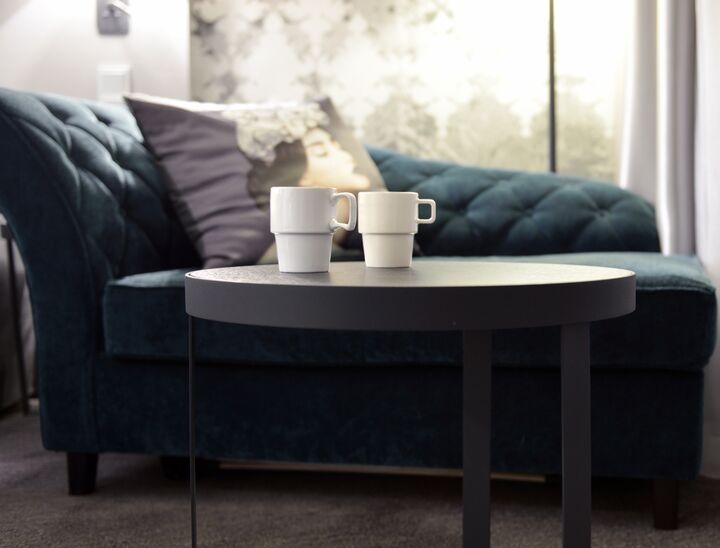
Finnish interior design
Finnish design is more than just an interior decoration. People who are in love with Finnish design consider it as a way of life and not just something to make the home interior attractive. Designs in Finland are timeless and it is everywhere. It seems like it is part of you where ever you go. Finnish design emphasizes in detail, creating everything with care to please the home owner as well as making the interior design an experience for them. Finns get their inspiration from nature and they are able to transform any natural raw materials into something exquisite. They are able to take the natural world and make it part of their very essence in living. This is exemplified by using their products in daily activities. Finns’ patriotic nature makes them prosperous and are able to spread their own products to the different parts of the world.
Some of the highlights of the Finnish Design
1. Finland produced a number of the adored design classics of mid century modernism.
2. Many interior designers have contributed to the success of the Finnish design and they are popular worldwide.
3. Finland is part of the Scandinavian region, therefore shares ideas with the other countries.
4. Finnish design offers similar raw materials with the other countries of the region such as wood and water.
5. The design is inspired with nature which is evident in their products and interior design ideas.
6. Among the popular products and designers of Finland are the Eeron Saarinen’s Tulip table, Alvar Aaltos’s bent plywood Paimio chair, and Kaj Franck’s Teema tableware.
History of the Finnish Design
During the post war years, specifically in 1917, when Finland became independent, the country has begun in creating major buildings as well as modern style for the Finns to have their own identity in the field of construction and design. The neighboring countries and former occupants of Finland such as Russia and Sweden have vastly contributed to the interior design. However, Finland has created its own identity by being close with nature and having nature inspired designs.
Architects and interior designers of Finland in 1930 have introduced international modernism in Scandinavia wherein several buildings are created using modern style. The use of new materials in creating decorative items have revolutionized the idea interior design into modernism. Alvaro Aalto, a world renowned architect and designer has made impression to the international community by designing innovative chairs and new forms of glassware. These designs are still popular these days and are still available in the market.
At the end of World War 2, interior design and architecture exhibits increased worldwide and in the 1950s Finland made a reputation for being a creator of innovative designs. Personalities in the world of construction and design such as Milan Triennales, Wikkala, Sapaneva and Franck have greatly influenced and contributed to the popularity of Finnish design.
With the growing Finnish interior design ideas, it has taken majority of the Scandinavian Design brand together with Sweden and Denmark. These countries featured the designs in various museums in the United States between 1954 and 1957 wherein the designs have gathered audiences. Many individuals were impressed with the Scandinavian design style such as the use of color, the materials used and the combination of crafts and mass production and the nature inspired design and products.
Plastics, synthetics and fiberglass made their way into the Finnish design during the 1970s. With the use of advancement in technology, Finn designers were able to expand their range of colors and forms in mass production. In 1980s, the Finnish Society of Crafts and Design established the Design Forum Finland. The goal of this is to promote design to the world.
During the 1990s, Finland has faced challenges in terms of financial and society. There was a rise in the unemployment rate, baking crisis, inflation and dealt with the collapse of the Soviet Union who has been the country’s largest trade partner. However, to avert the situation, Finland government has invested in the advancement in education and research and development to make the nation highly competitive. This long term thinking has made the country one of the competitive countries in terms of economy worldwide.
With regards to the construction and design industry, Finland was able to establish centers in which research and development focused in data gathering and creating benchmark in designs. As a result to this diligence, Helsinki was hailed as the World Design Capital for 2012 by the International Council of Societies of Industrial Design (ICSID).
Finnish interior design ideas that you will truly love
The Finnish design is considered to be nature inspired, therefore the appearance of the home interior is like being close with nature such as maximizing the natural light. We are all aware that winter in the Nordic region lasts for a long time and that sunlight seldom peeks in. Interior designers therefore ensures that the house has a lot of chances to let the sunlight in every time it is available. Houses are usually designed to have big windows and the layout is considered open to allow the easy access for natural light and the circulation of air.
Wood is one of the popular raw materials in designing the home interior. The flooring is usually made from wood planks and the same goes with several decorative items. The Finnish design is likewise a fan of minimalism, wherein simplicity is one of the key elements in interior design. Furniture are arranged in such way that they don’ cause problem in the flow in all rooms. Less is more, as they all say due to the clutterless appearance of the Finnish design. Decorative items are kept in its minimum numbers to avoid over decoration as well as the accumulation of clutter. Light fixtures are also common in Finish homes wherein these are both stylish and functional. The use of white or light colors are also common to brighten the home interior.
Happy decorating!




